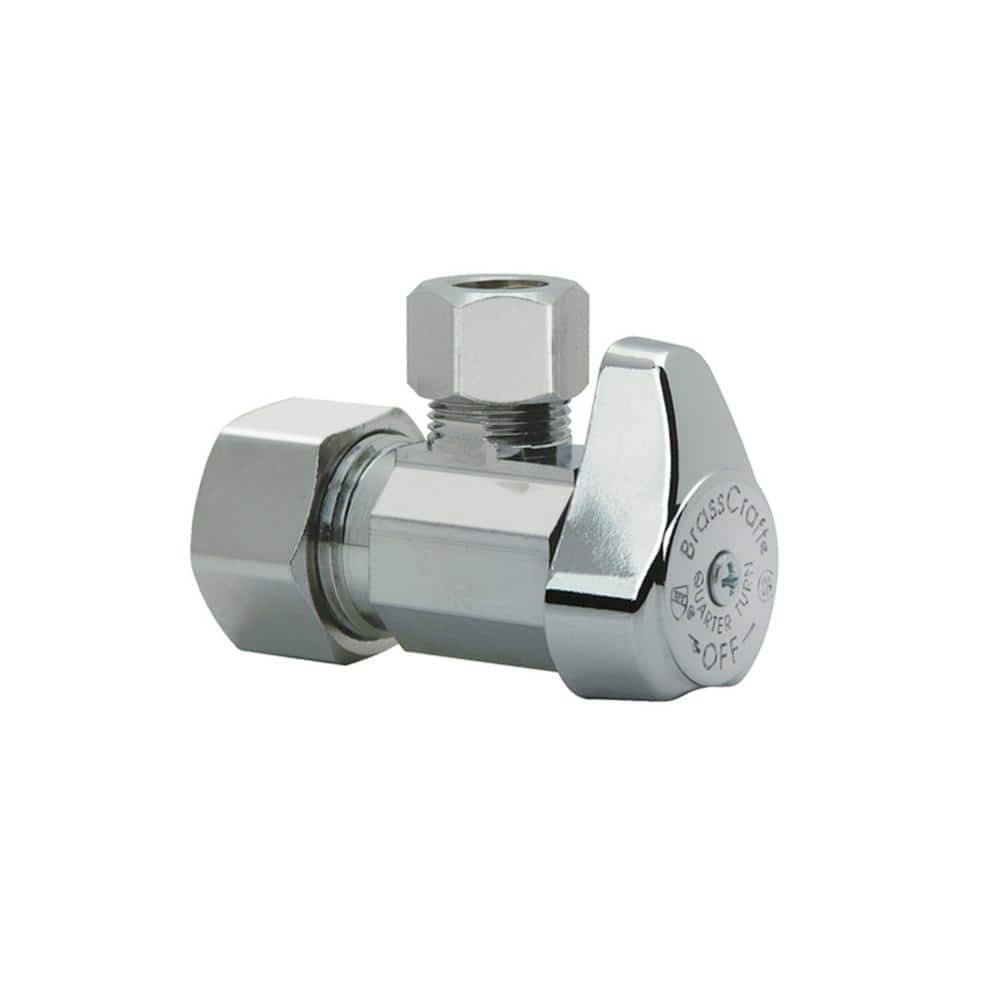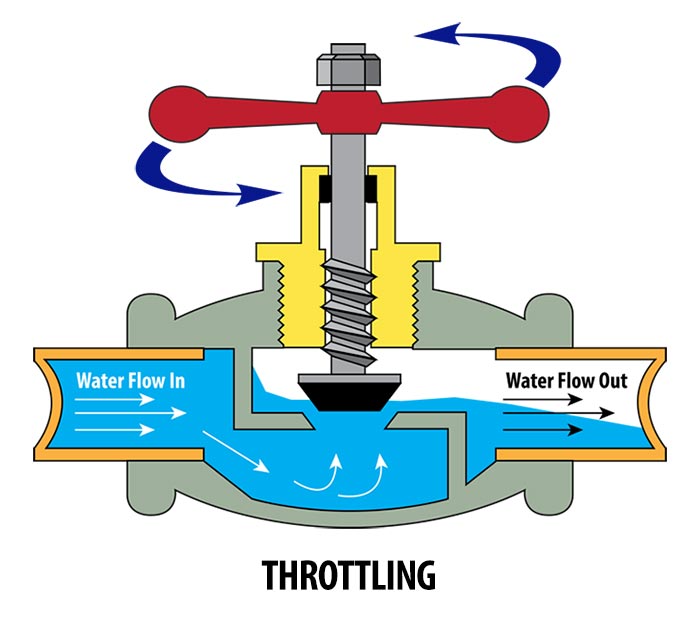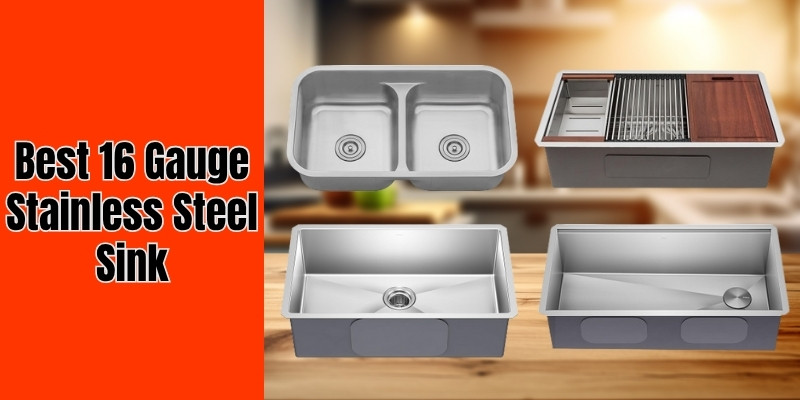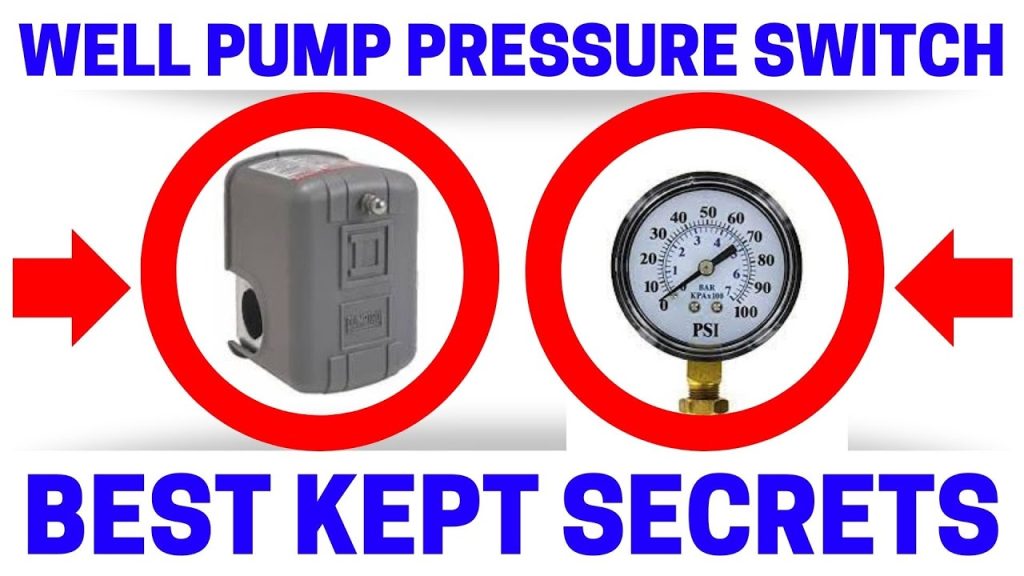Disclosure: This post contains affiliate links and I will be compensated if you make a purchase after clicking through my links. Learn More
Have you ever found yourself standing in the hardware store, staring at a bewildering array of valves, unsure of which one to choose for your plumbing needs? You’re not alone.
One question that often pops up is: “Are quarter turn valves better? ” This simple yet crucial decision can make a significant difference in your home’s plumbing efficiency and reliability. But how do you know what’s best? By reading on, you’ll uncover the unique advantages that quarter turn valves offer and whether they are the right choice for your next project.
Imagine a world where plumbing issues are fewer and maintenance is a breeze—doesn’t that sound appealing? Let’s dive deeper into this intriguing topic and discover the secrets behind quarter turn valves that could change the way you manage your home’s plumbing systems.

Credit: www.homedepot.com
Quarter Turn Valve Basics
Quarter turn valves are a common choice in plumbing systems. These valves are popular for their ease of use and reliability. A quarter turn valve operates with a simple 90-degree twist. This feature makes them quick to open or close. They are widely used in residential and commercial applications. People prefer them for their simplicity and efficiency.
What Is A Quarter Turn Valve?
A quarter turn valve is a type of valve that opens or closes with a 90-degree turn. This movement controls the flow of water or gas. The valve has a handle that aligns with the pipe when open. When closed, the handle is perpendicular to the pipe. This design makes it easy to see if the valve is open or shut.
Types Of Quarter Turn Valves
Quarter turn valves come in various types. The most common are ball valves and butterfly valves. Ball valves have a ball with a hole through the middle. Turning the handle aligns the hole with the pipe, allowing flow. Butterfly valves have a disc that rotates to permit flow. Each type has unique advantages for different applications.
Advantages Of Quarter Turn Valves
These valves offer several benefits. They are easy to operate, requiring minimal effort. Their design allows quick operation, making them ideal for emergencies. They provide a tight seal, reducing the risk of leaks. This efficiency helps in saving water and energy. Many users find them durable and long-lasting.
Common Uses Of Quarter Turn Valves
Quarter turn valves are versatile. They are used in household plumbing, like sinks and toilets. Industries use them for controlling gas or liquid flow. They are also found in HVAC systems and irrigation setups. These valves are essential in places where flow control is crucial.
Types Of Quarter Turn Valves
Quarter turn valves offer efficient flow control. They are easy to operate and maintain. These valves are versatile and used in various industries. There are different types of quarter turn valves. Each type has unique features and applications.
Ball Valves
Ball valves are popular for their durability. They have a spherical ball inside. The ball rotates to control flow. This design provides a tight seal. Ball valves are ideal for gas and liquid applications. They are easy to open and close. Their compact size saves space.
Butterfly Valves
Butterfly valves are known for their lightweight design. They have a disk that rotates to manage flow. The disk is attached to a rod. Butterfly valves are suitable for large flow volumes. They offer quick shut-off capabilities. Their simple structure makes them cost-effective.
Plug Valves
Plug valves feature a cylindrical or conical plug. The plug rotates to regulate flow. They are reliable for various mediums. Plug valves offer tight sealing. Their design allows easy maintenance. They are versatile and used in many systems.
Ease Of Use
Quarter turn valves are known for their user-friendly design. People often prefer them because they are easy to handle. They require less effort to operate compared to traditional valves. Their simplicity makes them ideal for both residential and commercial settings. Let’s explore why these valves are favored for their ease of use.
Simple Operation
Quarter turn valves operate with a simple twist. This straightforward mechanism is easy for anyone to understand. The valve opens or closes with a 90-degree turn. This design reduces the time spent on adjustments. Even those unfamiliar with plumbing can use them efficiently.
Quick Turn Functionality
The quick turn functionality is a standout feature. It allows users to control water flow instantly. A short turn achieves full valve operation. This makes them reliable in emergencies. Quick turns save time and prevent frustration. This feature enhances their usability in various situations.
Durability And Longevity
Quarter turn valves are known for their durability and longevity. They often last longer due to fewer moving parts. This design reduces wear and tear, making them reliable for prolonged use.
In the world of plumbing, the choice of valves can significantly impact the durability and longevity of your system. You might wonder, are quarter turn valves really better? Their design promises efficiency, but how do they stack up in terms of material strength and maintenance requirements? Let’s dive in to find out.
Material Strength
Quarter turn valves are often crafted from robust materials like brass or stainless steel. These metals are known for their resistance to corrosion and wear. Imagine installing a valve that remains unaffected by the moisture and pressure changes.
That’s the reliability you get with quality materials. I once replaced a traditional valve with a brass quarter turn model, and it has performed flawlessly for years. Isn’t that the kind of durability you want?
Maintenance Requirements
Maintenance can be a hassle, but quarter turn valves are designed to minimize it. Their simple mechanism requires less upkeep compared to multi-turn valves. You might find yourself spending more time enjoying your home rather than fixing plumbing issues. Regular checks are still necessary, but these valves make the process straightforward.
Think of the peace of mind knowing your valve won’t need constant attention. Wouldn’t it be nice to have one less thing to worry about? Quarter turn valves offer a promising blend of durability and longevity, thanks to their strong materials and low maintenance needs. Consider how these aspects align with your goals for a reliable plumbing system. Are you ready to make the switch?
Cost-effectiveness
Quarter turn valves can offer cost-effectiveness due to their simple design and ease of use. They require less maintenance, reducing long-term expenses for homeowners. Their straightforward operation also minimizes installation costs, making them a practical choice for budget-conscious individuals.
When you’re deciding whether quarter turn valves are the right fit for your home or project, cost-effectiveness is a crucial factor to consider. These valves might not always be the cheapest option upfront, but they can offer significant savings over time. Let’s explore how they stack up in terms of long-term savings and installation costs.
Long-term Savings
Quarter turn valves can be more cost-effective in the long run. Their simple design means fewer moving parts, which reduces the chances of failure. This translates to less frequent replacements and repairs, saving you both time and money. Think about the last time you had to deal with a leaky valve. The cost of hiring a plumber or buying a replacement can add up quickly.
With quarter turn valves, the durability can give you peace of mind, knowing you won’t be frequently reaching for your toolbox or calling for help. Wouldn’t you prefer a solution that offers reliability and reduces hassle over time?
Installation Costs
While quarter turn valves might have a higher initial purchase price, their installation process is typically straightforward. Most DIY enthusiasts find them easier to install compared to traditional multi-turn valves. This simplicity can lead to savings if you’re hiring a professional, as the job can take less time.
Imagine installing a new valve without the usual headaches. With fewer steps and less complexity, quarter turn valves can be a more user-friendly option. This ease of installation can also reduce the risk of errors, which might otherwise result in costly fixes down the line. Have you ever felt overwhelmed by a seemingly simple home improvement task? Quarter turn valves might just be the solution to alleviate some of that stress.
In short, while the upfront costs may seem high, the potential for long-term savings and easier installation makes quarter turn valves a smart investment. What aspects of cost-effectiveness do you prioritize when choosing your home fixtures?

Credit: www.plumbingsupply.com
Applications And Versatility
Quarter turn valves are popular for their simplicity and reliability. Their versatility makes them suitable for various applications. They can be used in both industrial and residential settings. Let’s explore their uses and benefits.
Industrial Uses
Quarter turn valves are often found in factories. They control the flow of liquids and gases. Their quick operation saves time in emergencies. Many industries prefer them for their durability. They work well in harsh environments.
These valves are used in oil and gas facilities. Chemical plants rely on them for safety. Their design minimizes the risk of leaks. Power plants use them to manage steam flow. Their ease of maintenance is a big advantage.
Residential Applications
In homes, quarter turn valves are common. They are used in plumbing systems. These valves are found under sinks and toilets. They make it easy to shut off water quickly. Homeowners appreciate their straightforward operation.
These valves are great for DIY repairs. They help prevent water damage in homes. Their compact size fits in tight spaces. Garden irrigation systems also use them. They offer precise control over water flow.
Comparison With Traditional Valves
Quarter turn valves offer quicker operation and are often more compact compared to traditional valves. Their design allows for easy maintenance and reduced wear. This can lead to enhanced efficiency and reliability in various applications.
When you’re considering replacing or installing a valve, you might wonder if quarter turn valves are better than traditional ones. This comparison might seem like a simple choice, but understanding the differences can significantly impact your decision-making. Let’s dive into how these two types of valves measure up in terms of operational efficiency and space considerations.
Operational Efficiency
Quarter turn valves are known for their ease of use. A simple 90-degree turn opens or closes the valve completely, which is significantly quicker than the multiple turns required by traditional gate valves. This efficiency can be a game-changer, especially in situations where time is of the essence. Imagine you’re trying to quickly shut off the water supply in an emergency. With a quarter turn valve, you can act swiftly and decisively.
The straightforward operation also reduces the chance of wear and tear over time, leading to fewer maintenance issues. In contrast, traditional valves often require more effort and time to operate, which can be cumbersome. They might also demand more frequent maintenance due to their complex mechanisms. This could lead you to ask: Is the extra effort worth it for the application you have in mind?
Space Considerations
Space is another critical factor when choosing a valve. Quarter turn valves generally take up less space compared to their traditional counterparts. This can be particularly advantageous in tight spaces where every inch counts. Think about a compact utility area where space is at a premium.
A quarter turn valve’s sleek design fits neatly without the bulk of a traditional valve. This not only makes installation easier but also allows for more flexibility in how you arrange other components around it. On the other hand, traditional valves, with their larger bodies and turning requirements, might necessitate more room.
This could limit where you can install them and might even require additional adjustments to your current setup. Does your space allow for such adjustments, or is a more compact solution preferable? In summary, quarter turn valves offer operational and spatial advantages that can make them a better choice for many applications.
However, understanding your specific needs and constraints will help you make the best decision. What will you choose for your next project?
Considerations Before Choosing
Choosing the right valve for your plumbing needs can be tricky. Quarter turn valves are popular for their ease of use and reliability. Yet, certain factors need consideration before deciding. Your choice impacts efficiency and safety. It’s crucial to evaluate the system’s specific requirements and constraints. This ensures optimal functionality and longevity of the valves.
System Compatibility
Check if the valve fits your existing system. Compatibility is key. Different valves connect in various ways. Ensure the valve’s size matches your pipe dimensions. This prevents leaks and maintains system integrity. Consider the material too. Brass, plastic, and stainless steel are common. Match the valve material with your piping material for best results.
Pressure And Temperature Limits
Valves operate within certain pressure and temperature ranges. Exceeding these can lead to failure. Verify the valve’s specifications. Ensure they align with your system’s conditions. High-pressure systems require robust valves. Similarly, temperature fluctuations affect valve performance. Choose a valve that withstands your system’s maximum temperatures.

Credit: www.sharkbite.com
Frequently Asked Questions
What Are Quarter Turn Valves?
Quarter turn valves are types of valves that open or close with a 90-degree turn. They offer quick operation.
Why Choose Quarter Turn Valves Over Traditional Ones?
Quarter turn valves are easier to operate. They provide faster flow control, making them convenient for various applications.
Are Quarter Turn Valves More Durable?
Yes, quarter turn valves often have fewer parts. This leads to less wear and tear, enhancing durability.
Do Quarter Turn Valves Require Maintenance?
Quarter turn valves typically need less maintenance. Their simple design minimizes the risk of leaks and blockages.
Final Words
Quarter turn valves offer simple and efficient operation. They save time with their quick turn mechanism. Their design minimizes risk of leaks. Maintenance is often straightforward, reducing long-term costs. Durability makes them a reliable choice for many applications. Users find them easy to handle in varied settings.
They fit well in tight spaces, enhancing their versatility. Choosing the right valve depends on specific needs. Consider factors like budget, installation, and usage frequency. Quarter turn valves often meet diverse requirements effectively. Their benefits make them worth considering for many situations.


